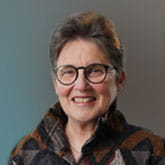A preoperative time-out, which The Joint Commission defines as “an immediate pause by the entire surgical team to confirm the correct patient, procedure, and site,” was introduced in 2003.
While initially viewed as a safety measure to prevent harm as a result of operating on the wrong patient or the wrong site or performing the wrong procedure, time-outs evolved to include quality patient care and enhanced performance of the surgical team1. The impact of the COVID-19 pandemic has escalated rapidly, when one considers that the first case of COVID-19 was only diagnosed in the U.S. on January 20, 20202. Many practices did not have a chance to conduct a COVID-19 “time-out” before being completely immersed in a torrent of tactical and strategic imperatives dictated by the relentless march of infections across the country.
What does a COVID-19 “time-out’ look like?
Similar to its clinical counterpart, it includes a check list of items that the practice needs to attend to as it approached the crisis. Items on the list span imperatives such as: selection of a projection model, attending to business continuity, implementing required workflow changes, plans for patient engagement and retention and forging new collaborations and partnerships.
Selecting a Projection Model
It is difficult to operate on a patient without prior knowledge of their diagnosis and resulting prognosis. Similarly, it is difficult to prepare for a crisis like a pandemic without an estimate of its dimensions, characteristics, cadence and duration. This is best done by studying the projections created by experts modeling the course of the pandemic. There are multiple sources for COVID-19 projection models3, with different models utilizing different predictive algorithms, and many providing more than one case scenario which changes based on altering their variables. It is important for a practice leadership team to choose a projection model from a reliable source. It is also important to remember that every model has strengths and weaknesses that stem from the fact that COVID-19 is a novel emerging infectious agent and that there is much to learn about its transmission, seasonality and antigenic stability – factors that could significantly impact a model’s validity.
Once a projection model is agreed upon, an investment of executive time is needed in order to have all members of the practice leadership team understand the model and its ramifications, as it serves as a road map of sorts, until either supported or disproven by real time data. If possible, sticking with a single projection model for the duration of the crisis is preferable as it allows plotting a steadier course of action.
One of the projection models that has been lauded by epidemiologists around the world as the most comprehensive prediction of what the U.S. could be facing in the coming months is the model published by a team of epidemiologists from the Imperial College of London4. It is also the model that is informing the COVID-19 federal task force. This model provides multiple scenarios of the outcomes that might result from different levels of suppression and mitigation efforts.
Once a projection model is selected, a practice has the necessary framework to begin addressing business continuity plans, patient engagement and retention strategies and forging new partnerships and collaborations. These issues will be addressed in the Part 2 of this blog tomorrow.
2https://www.nejm.org/doi/full/10.1056/NEJMoa2001191
Meet NextGen Ambient Assist, your new AI ally that generates a structured SOAP note in seconds from listening to the natural patient/provider conversation.
Read NowCategories
- Analytics and Reporting
- Regulatory Updates
- Artificial Intelligence (AI)
- Community Health
- COVID-19
- Dental
- Documentation
- Electronic Health Records
- Financial Management
- Health IT 101
- Industry news
- Integrated Care
- Interoperability
- Mobile EHR
- NextGen Advisors
- Patient Experience
- Practice Management
- Provider Experience
- Patient Engagement
- Population Health
- Revenue Cycle Management
- Small Practice
- Telehealth
- Value-based Care
